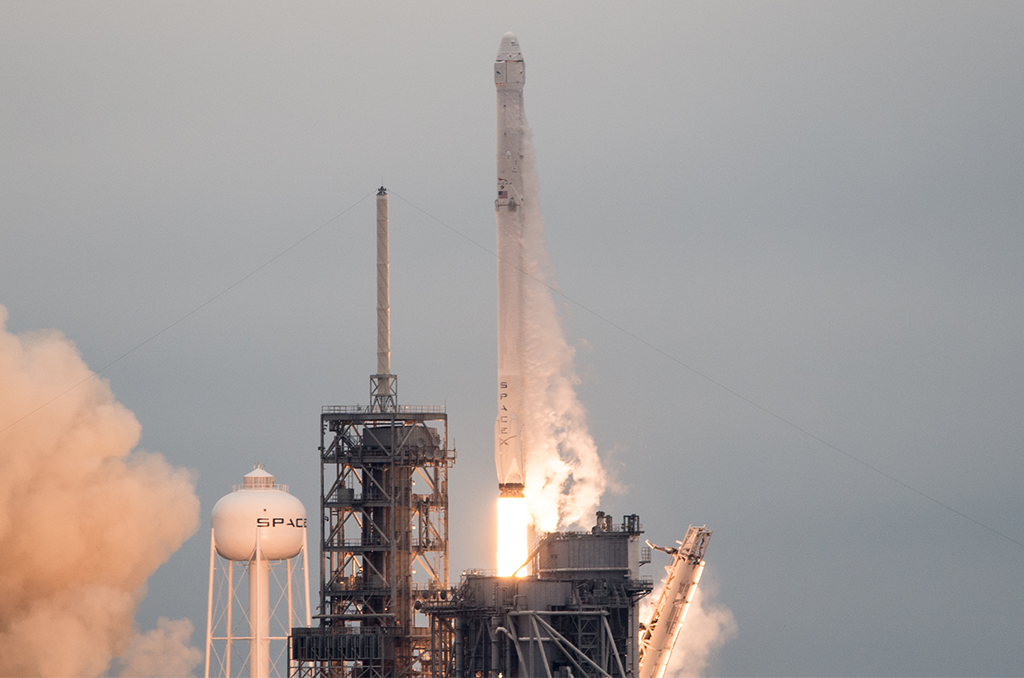SpaceX Rocket Launch — Courtesy: Shutterstock — John Huntington
After nearly eight months in space, three NASA astronauts and one Russian cosmonaut eventually returned to Earth early Friday. Their journey to the ISS began with weather delays and finished at the mercy of the weather once more.
After disembarking from the International Space Station on Wednesday night, SpaceX’s Crew Dragon capsule, called Endeavour, returned NASA astronauts Matthew Dominick, Mike Barratt, Jeanette Epps, and Russian Cosmonaut Alexander Grebenkin to Earth at 17,500 mph. After crashing into Earth’s atmosphere on Friday morning, Endeavour decelerated, and with the aid of two sets of parachutes, it decelerated much more. Around 3:30 a.m. ET, the capsule made a gentle landing at sea off the coast of Pensacola, Florida, after its main chute was deployed and it glided down to a few miles per hour.
The capsule was greeted by a swift boat, and the recovery ship was waiting close by to load the warm Crew Dragon spacecraft. Following the capsule’s retrieval, NASA and SpaceX crews welcomed the astronauts back to Earth by opening the hatch.
Weather-related delays in the Crew-8 mission’s launch and completion
Due to storms and bad weather off the shores of Florida, the four spent more time on the ISS than they would have on a typical six-month long-duration mission. They also experienced many weather-related delays prior to liftoff during their March launch.
Originally scheduled to return home during the summer, the four-person crew’s mission was extended to support Boeing’s problematic crewed test flight. The crew then had to wait for safe splashdown circumstances along the east and west coastlines of Florida for weeks. The trip was postponed until this week due to windy weather and Hurricane Milton’s impact in Florida.
For a spacecraft to successfully recover, NASA has set certain meteorological requirements, such as wind speeds of no more than 15 feet per second and wave heights of no more than 7 degrees wave slope. Rain must have a 25 percent possibility and lightning must be more than 10 miles away. The purpose of these meteorological conditions is to protect both the astronauts and the recovery crews who will be picking them up after splashdown.
Numerous studies and experiments were carried out aboard the orbiting laboratory by the astronauts during their extended time in orbit. Dominick kept posting photographs of his observations from orbit, such as Hurricane Milton’s approach to Florida.
Stories that matter are our priority. At Florida Insider, we make sure that the information we provide our readers is accurate, easy-to-read, and informative. Whether you are interested in business, education, government, history, sports, real estate, nature or travel: we have something for everyone. Follow along for the best stories in the Sunshine State.

Born and raised in South Florida, Krystal is a recent graduate from the University of Miami with professional writing experience at the collegiate and national news outlet levels. She’s a foodie who loves all things travel, the beach, & visiting new places throughout Florida.

